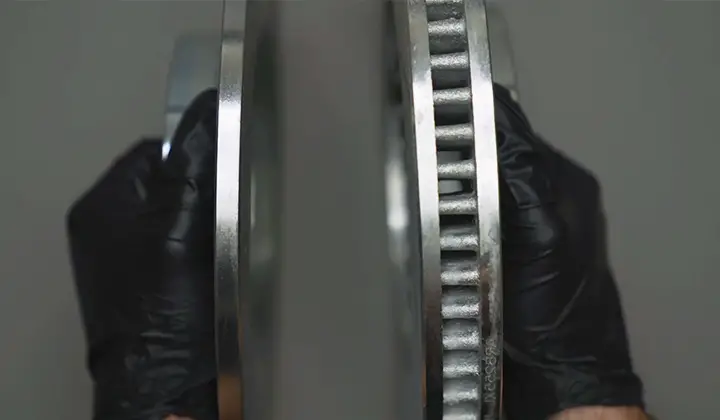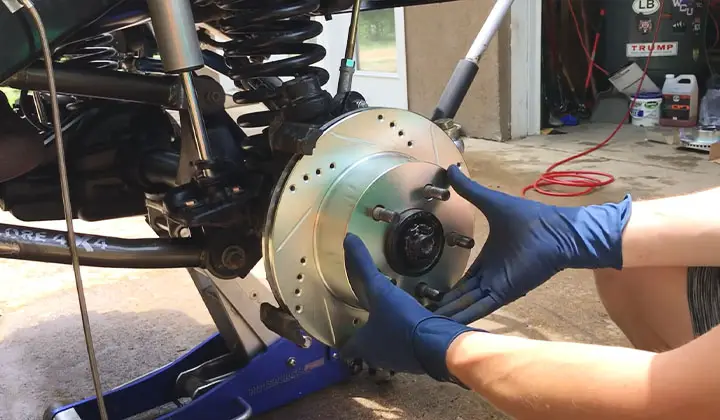Choosing the right rotor can be a daunting task for homeowners. There are two types of rotors- solid and vented- each with its own benefits and drawbacks.
Solid rotors are more traditional in design, while vented rotors offer greater airflow and ventilation to your home’s attic or exterior walls.
It is important to choose the right type of rotor for your home based on its size, climate, and other features such as insulation levels and noise levels produced by the fan motor(s).
To make an informed purchase, consult a professional who will help you measure your house’s specific needs before recommending a particular rotor model or brand.
Once you have chosen a rotor, it is important to install it properly by following the manufacturer’s instructions carefully.
Finally, keep in mind that regardless of whether you choose solid or ventilated rotors, regular maintenance is essential to ensure they perform optimally over time
Contents
Are Solid or Vented Rotors Better
If you have a car with vented rotors, this means that the brake discs are attached to an air chamber. When the brakes are applied, this creates a vacuum that sucks the rotor in from the disc and seals it against wear.

This type of braking system is more effective at reducing friction and therefore allows for greater stopping power.
Vented Rotors
Ventilated rotors offer a number of benefits over solid rotors, like increased airflow and less noise. When choosing a rotor for your car, it is important to consider the type of driving you to do most.
A vented rotor will be better suited for drivers who frequently experience high speeds or operate in areas with lots of dust and pollen particles.
Solid rotors are often more affordable than vented ones, but they may not provide the same level of performance when it comes to braking efficiency or sound levels.
It’s also important to factor in how long your existing brake pads will last before needing replacement vs upgrading to a vented rotor right away – this can vary depending on the make and model of your vehicle.
Traditional Solid Rotors
If you have a truck that’s been sitting around for months or years, it’s time to give your brakes a break and replace the pads and rotors.
Rotors are made of different materials that can affect braking performance in various ways – so make sure to choose the right kind for your vehicle. It’s important to replace the pads even if just one is worn out, as this will help prevent brake failure down the road.
To find out whether or not your brakes need replacement, try using a sensitivity tool like an ABS light meter or dashcam; these devices measure how well your brakes work under varying conditions.
A properly functioning parking brake should stop all movement from the front wheels when applied gently (and disengaged).
Finally, keep in mind that aftermarket parts may wear more quickly than OEM parts- so it might be worth considering replacing them sooner rather than later too.
Advantages of Vented Rotors
Vented rotors are a popular option for those who want to improve their car’s braking performance. They work by allowing air to flow around the rotor, helping it to stop more quickly.

This is an important feature if you’re driving in wet or icy conditions, as it can help your brakes function more effectively.
Improved Braking Performance
Vented rotors usually provide better braking performance because they allow air to escape while you brake, which reduces the amount of heat that builds upon the rotor and helps it stop quicker.
Ventilated rotors work together with brake pads to create a friction surface that is much greater than when brakes are applied without any airflow assistance from rotors or ducts on either side of the disc/rotor assembly (known as “floating” braking).
This increased surface area helps reduce pad wear and enhances stopping power even under extreme conditions such as heavy rain or snowfall.
Increased Efficiency
When rotors are vented, it allows more air to enter and exit the rotor at high speeds, which in turn increases efficiency. This means that your vehicle will use less fuel while driving and achieve better performance overall.
Reduced Fuel Consumption
Rotor venting also reduces fuel consumption because the Venturi Effect causes turbulence inside the engine cylinders, forcing more air into them and using more energy to compress them than if the vents were not there.
In addition, this type of ventilation can increase gas mileage by up to 4%.
Enhanced Engine Protection
If your car has metal-on-metal contact between its engine and wheels due to poor wheel alignment or worn Rotor Disks – vented rotors will help protect both components very effectively.
Dissipate Heat Better
Vented rotors dissipate heat better than traditional rotors, which means that they can handle higher temperatures and keep your car running cooler. This helps to improve fuel economy and prolong the life of your engine.
Don’t Warp or Fade
Traditional rotors are prone to warping and fading over time, which can cause serious problems with your car’s performance. Vented rotors are designed to withstand high levels of stress and continue performing well even after years of use.
Limitations of Vented Rotors
Braking performance is greatly affected by the rotors’ ability to dissipate heat. In rare cases, a rotor can become too hot and warp from the intense heat. When this happens, the braking force that’s generated will be significantly reduced.
Winter Braking
Vented rotors have a number of limitations during winter braking. This is because there is less room for the air to escape and as such, the rotor will heat up faster than usual.
This can cause problems with your car’s brakes, including reduced stopping power and increased wear on your pads and discs.
Wet Roads
When wet roads are encountered, vented rotors become much more difficult to operate due to their design which allows water into the rotor housing from all sides at once.
As a result, they may not work as well in icy or snowy conditions and may require longer stops to achieve the same level of braking performance as non-vented rotors would under these circumstances.
Dust & Debris accumulation
Another issue that arises when using vented rotors is dust & debris accumulation inside of them over time which can reduce their effectiveness over time – especially if you live in an area with lots of dust particulates regularly stirred up by cars & trucks.
FAQs
What Is the Purpose of Vented Brake Rotors?
Vented brake rotors are used to dissipate heat from the brakes. They are also used in other automotive applications such as engine cooling.
Can You Put Vented Rotors on the Rear?
You can put vented rotors on the rear of your vehicle, but you should be aware of a few things before you do.
How Many Miles Do Brake Rotors Last?
The average lifespan for brake rotors is about 10,000 miles, but it can be as low as 4,000 miles or as high as 12,000 miles depending on driving style and how well you maintain your vehicle.
What Is the Benefit of Drilled and Slotted Rotors?
Drilled and slotted rotors are used in a wide variety of applications, from high-speed turbines to car engines.
In addition to these advantages, drilled and slotted rotors are more reliable than other designs.
They can withstand greater loads because they are less likely to break or crack due to fatigue or stress corrosion cracking (SCC).
Conclusion
The decision of whether to go with solid or vented rotors for your vehicle is ultimately up to you and what type of driving you do most often.
Solid rotors are typically used on drivable surfaces such as roads, while vented rotors are more common in wet and snowy conditions.
They both have their pros and cons; it’s important to decide which one will work best for your needs before making the purchase. Some factors that may influence your decision include how frequently you drive, the climate where you live, and the cost of new rotor pads or installation services.
Make sure to read reviews online before making a purchase so that you get an accurate idea of what others think about each option available.
